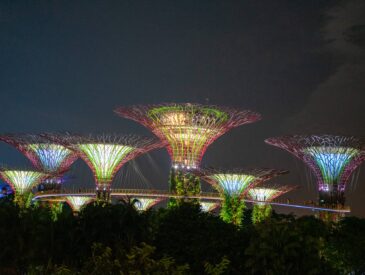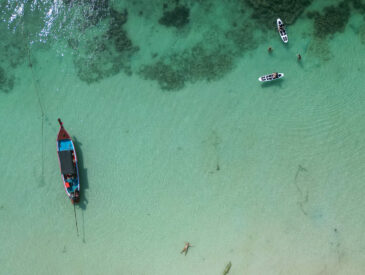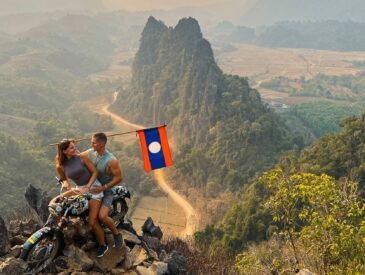Laura’s Passport
The beauty of Vietnam: Best places in Vietnam to visit
Vietnam is a wonderful travel destination for everyone. Its karst topography, stunning bays, thrilling caves, colorful markets, and vibrant nightlife are all fascinating elements that have made Vietnam a traveler’s paradise. And this paradise offers a plethora of things to do.
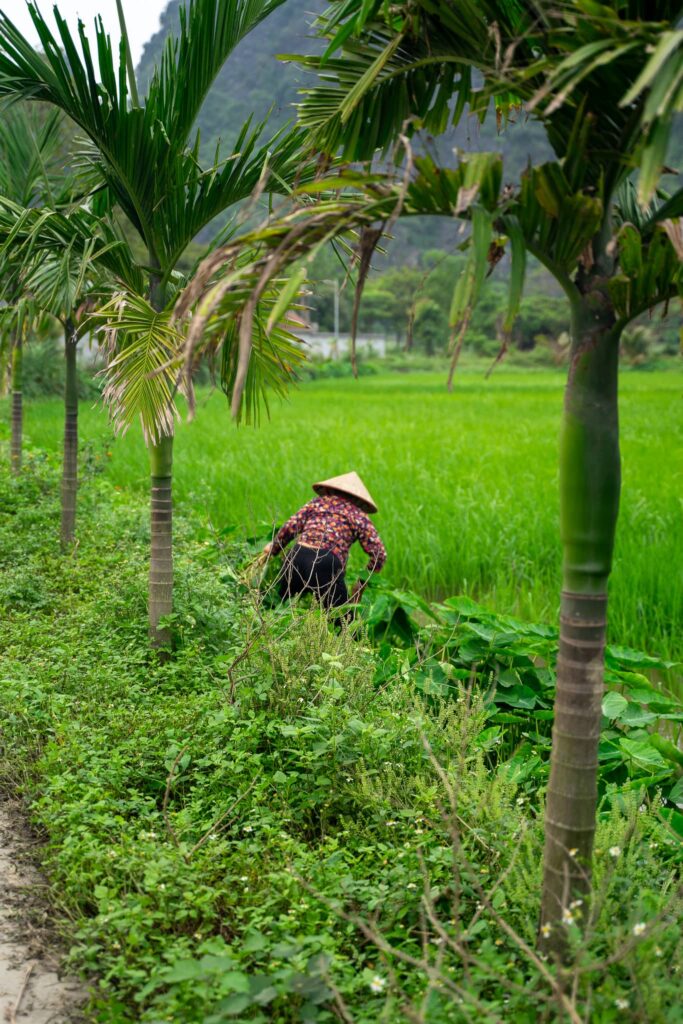
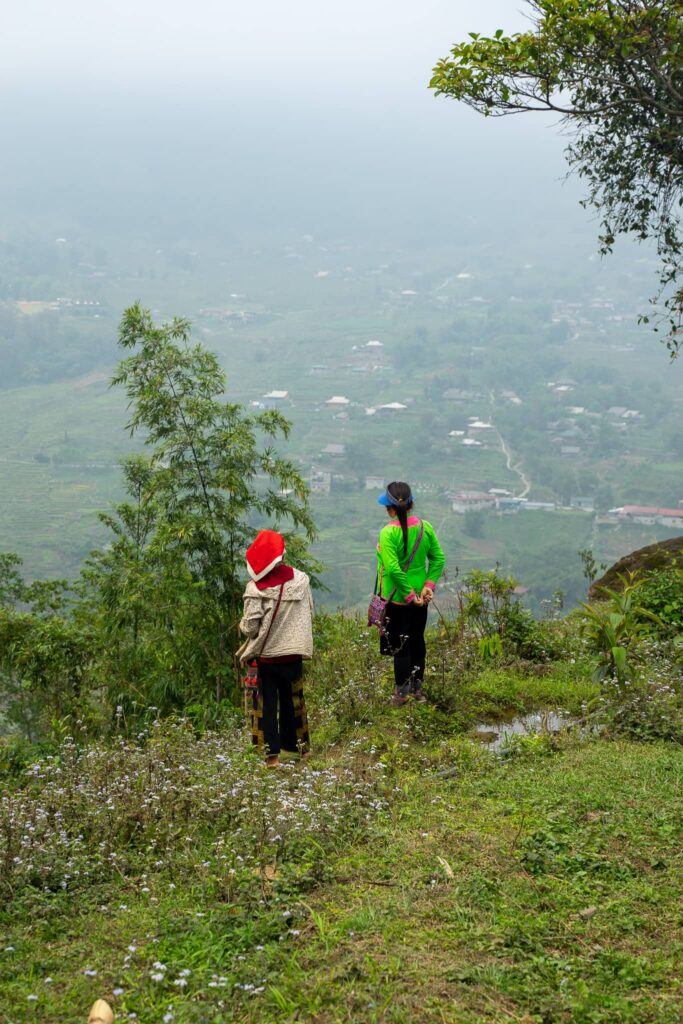

Before you get completely confused, we’ve compiled a list of the best places in Vietnam to visit.
Scroll down to discover all the amusing things to do in Vietnam, which will make your vacation impressive and refreshing.
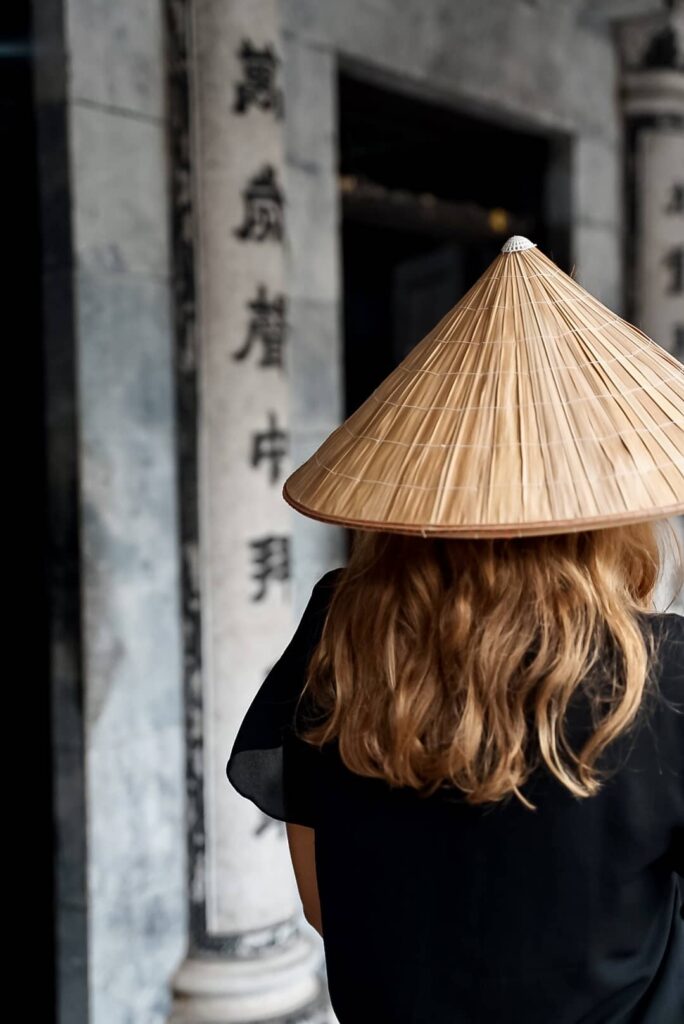
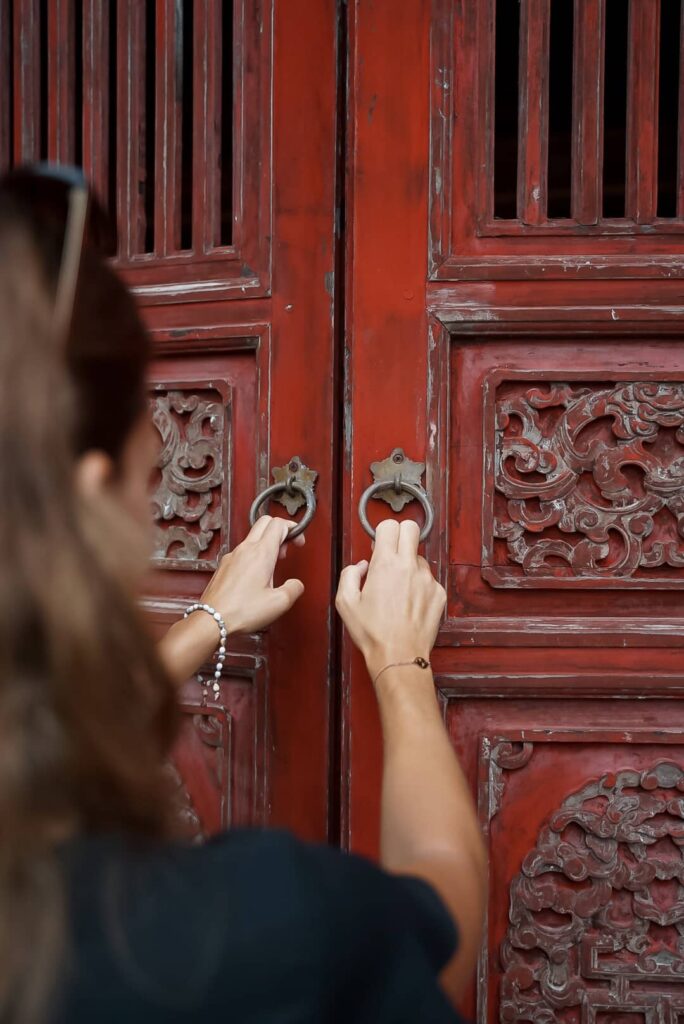
Disclaimer: This article may contain affiliate links. By booking through them, you won’t pay anymore, but I’ll earn a small commission that will enable me to continue developing this blog.
You can also consult my practical guide to Vietnam to help you plan your trip.
Best places in Vietnam to visit: What to see?
The country is full of beautiful sites, but some places are not to be missed. If you’re not sure where to start, here are a few ideas for making the most of your stay, whether you’re in the north, south, or center of the country! Here’s our list of the best places in Vietnam to visit.
1) Halong Bay, Ninh Binh & the Tam Coc River
Northern Vietnam / Visiting time: 3 to 4 days.
Recognized by UNESCO as a world natural AND cultural heritage site, Ninh Binh is a place where the drastic beauty of karst formations meets the idyll of floating rice paddies. With immense cultural and natural beauty, there’s plenty to do in Ninh Binh, some of which shouldn’t be missed. Below is a list of things not to miss in the region.
- Mua Caves – Ninh Binh’s most beautiful viewpoint: the climb takes just 15 minutes, depending on your physical condition. There are 500 steps in all. The view is impressive! Ticket price: VND 100,000
- Cycling through the rice fields in the Tam Coc region. The best way to discover Ninh Binh is from the saddle of a bicycle. Many hotels lend bicycles free of charge or rent them for not much. If this is not the case, ask at nearby hotels and stores. Ninh Binh’s most important sites can easily be explored by bike.
- Take a boat trip around Trang An: The Trang An landscape has been recognized as a UNESCO World Heritage Site. Climb aboard a small boat and cruise for 2 hours through and past caves, temples, and lakes. Price: Tickets can be purchased at the Trang An Ecological Park parking counter. On arrival, you’ll see the tourist center. Adults: 200,000 VND. Children under one meter: 100,000 VND.
- Bich Dong Pagoda : The Bich Dong pagoda is a collection of majestic troglodyte temples. These ancient shrines and historic pagodas are scattered along the hillside, some dating back to the 15th century. The entrance to the bridge is a well-known spot for Instagrammers. The entrance is free of charge.
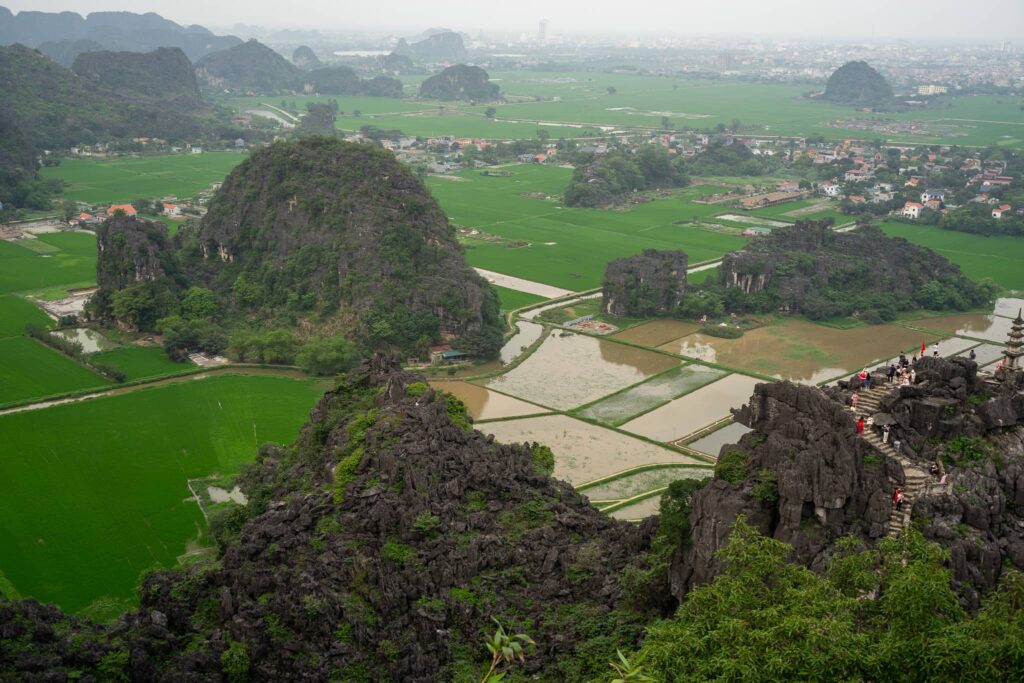
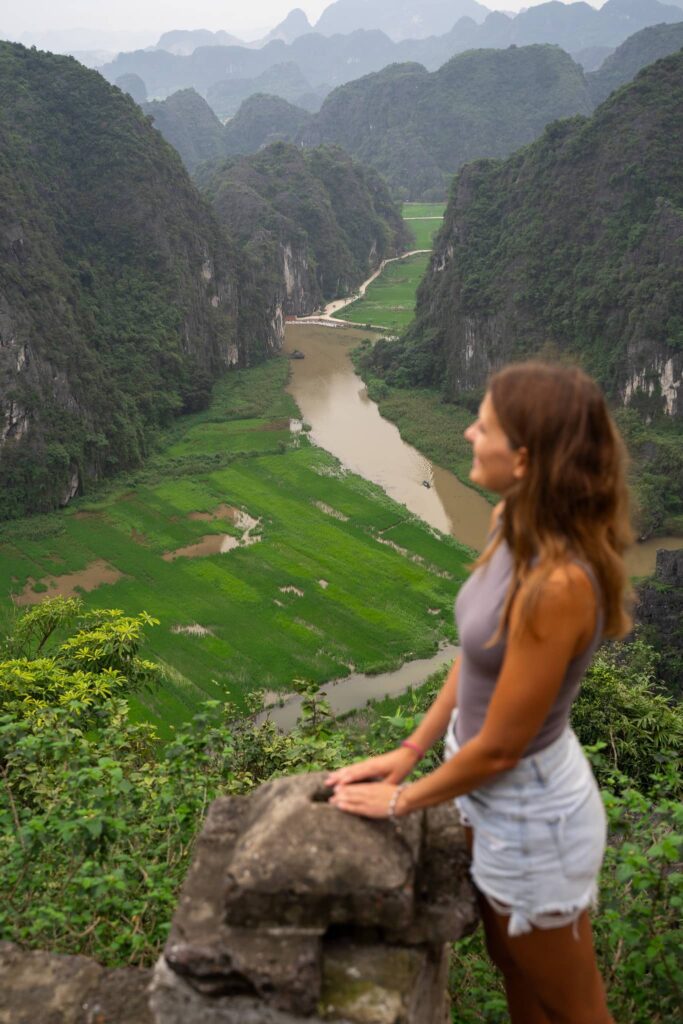

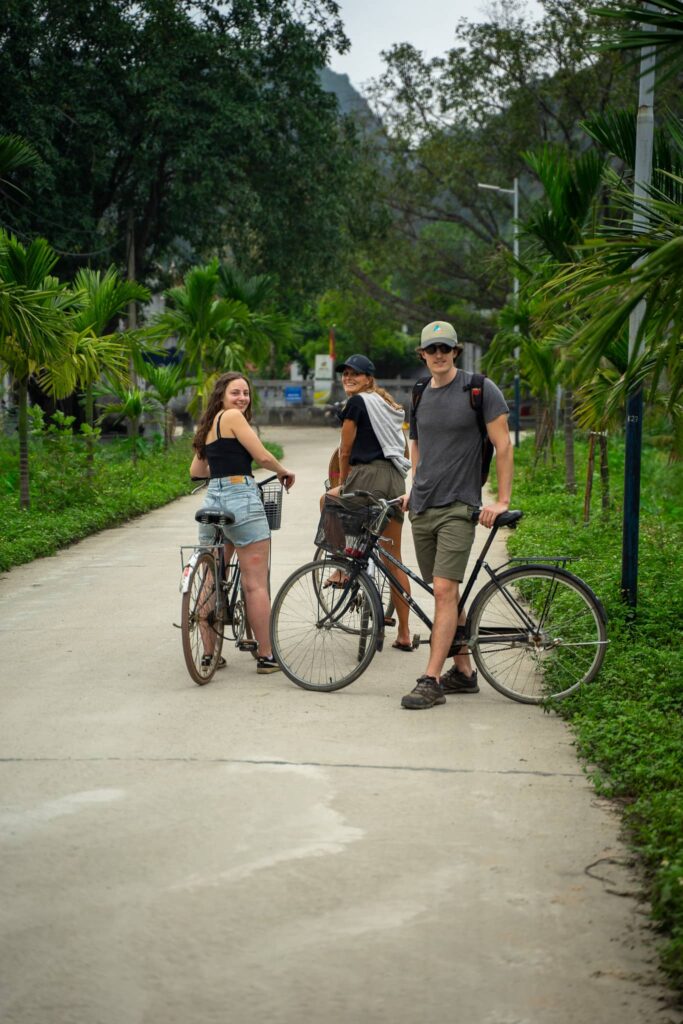


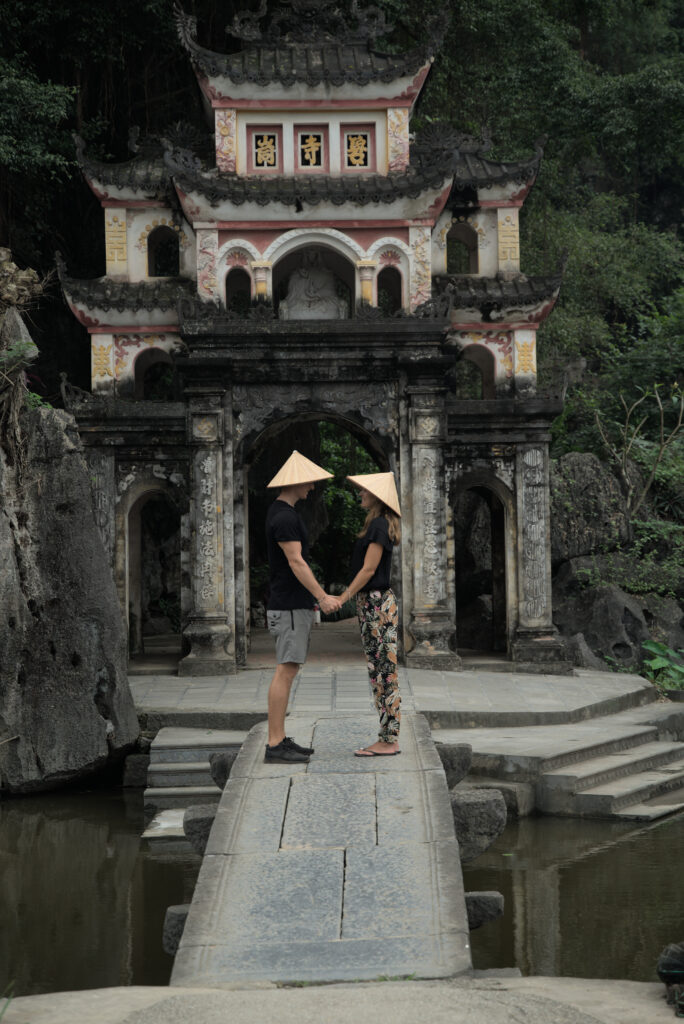
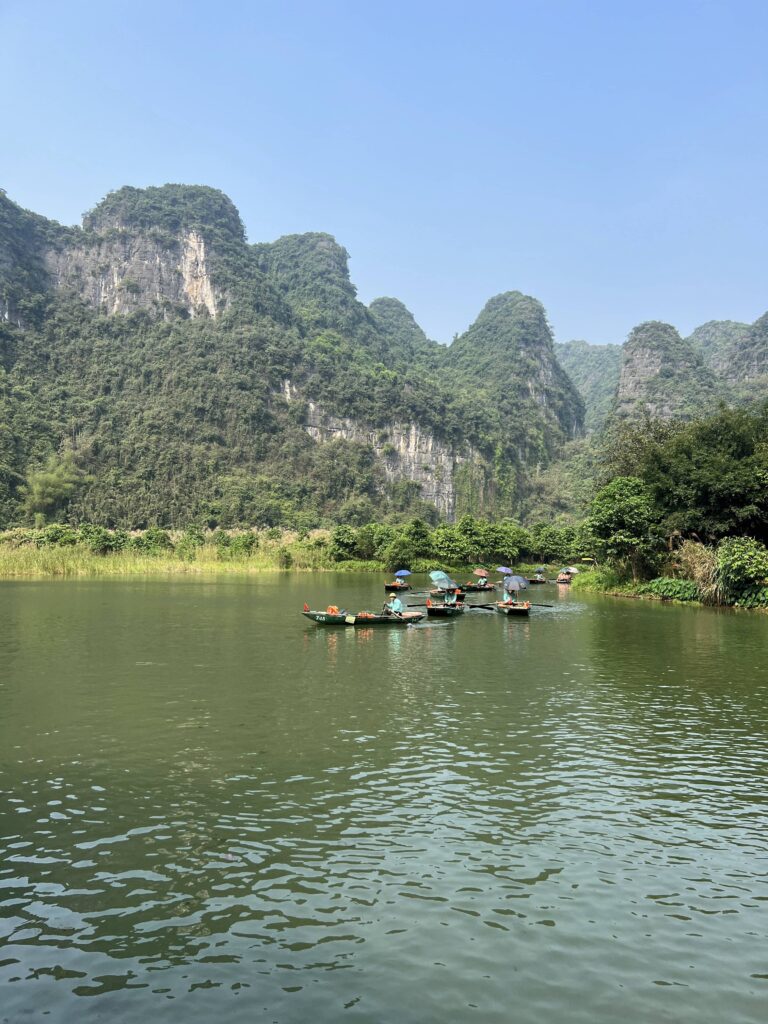
Hoi an – City of Lanterns
Central Vietnam / Visiting time: 3 to 4 days.
Hoi An means “peaceful meeting place“. Its well-preserved ancient town has been a UNESCO World Heritage Site since 1999. Interested in visiting Hoi An? Read on to find out what you can do!
A visit to Hoi An is a unique and unforgettable experience. With its historic buildings, colorful cobbled streets, bespoke tailors, and delicious local dishes, Hoi An offers a charming and fascinating insight into Vietnamese culture. The destination is also ideal for beach lovers and cultural explorers.
Getting around Hoi An
The old town of Hoi An is very small and can be visited on foot. If you only plan to visit the old town, you can simply walk!
Most hotels have bicycles available. It’s also a great way to discover the surrounding area, including rice paddies, the sea, etc.
What to do in Hoi An?
5 reasons to visit Hoi An :
- Visit Vietnam’s most atmospheric old town.
- Cycle through the green rice paddies of the countryside.
- Relax on one of the beaches.
- Explore the city at night with lanterns lighting up the streets.
- Take a basketboat.
Below are the must-sees when visiting Hoi An, Vietnam.
- A stroll through the old town: Visit the UNESCO World Heritage sites and the lanterns in the old town of Hoi An.
- Take a basket boat: The coconut boat ride in Hoi An is a not-to-be-missed experience for visitors. Ticket prices: The cost of a boat ride is 150,000 VND to 200,000 VND per boat, for 2 to 3 people. Allow VND 100,000 if you want someone to turn the boat around. You’ll find several organizations on Google that organize this activity. We went through the Nga Coconut Basket Boat Tour organization.
- Cycling through rice paddies: Vietnam’s rice paddies are extremely popular. Those found around Hoi An may be less spectacular than the rice terraces of northern Vietnam, but they are much more accessible. Pedal from the old town to the open roads of Cam Thanh and Cam Chau. Here you’ll discover Vietnamese life in the countryside.
- Relax at the beach: There are many beaches in and around Hoi An. The two most popular are An Bang Beach and Cua Dai Beach. You can easily reach these beaches by bike from the center.
- Sample regional dishes: Hoi An is probably where you’ll have some of the best meals of your trip, thanks to the incredibly fresh produce delivered daily from the surrounding farms and seas. Fill up on authentic local specialties like Cao Lầu, White Rose, Hoành Thánh, and Mì Quảng – at Morning Glory restaurant, Cao lầu Không Gian Xanh or Mai Fish. TIP: For an unbeatable snack, Madame Khanh’s banh mi are incredibly good.
- Drink a Vietnamese coffee or a coconut coffee on one of the city’s many rooftops. My good address: is Faifo Coffee.
- Visit the Hoi An market: Hoi An’s markets are one of the most popular sights. Markets are also one of the best places to observe local life. In the center of town, near the river, is the central market, where you can find everything. Every evening, there’s a night market. The 300-meter-long Nguyen Hoang Road is transformed into a sea of color as vendors set up stalls selling everything from jewelry and handmade clothes to delicious snacks. The market is illuminated by hundreds of colorful lanterns that decorate the street and light up the stalls.
- Take a cooking class in Hoi An: Hoi An is the most popular place to take a cooking class in Vietnam. A cooking class in Hoi An is often not limited to learning how to prepare dishes but also includes many other activities, such as a visit to a local market, boat trips, cycling, and visits to artisan villages.
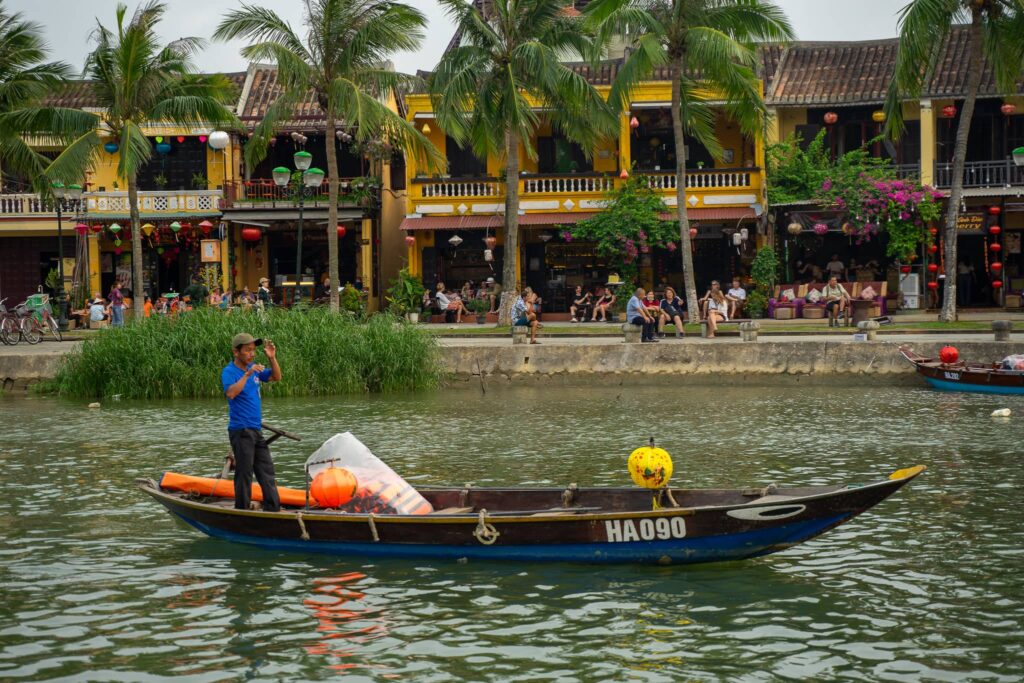
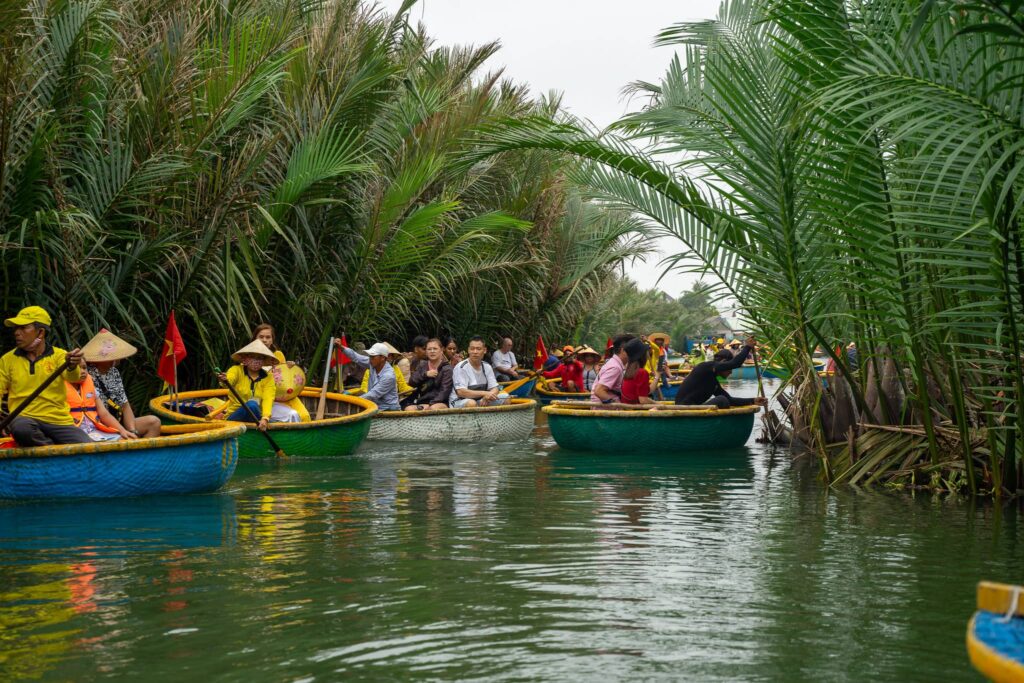
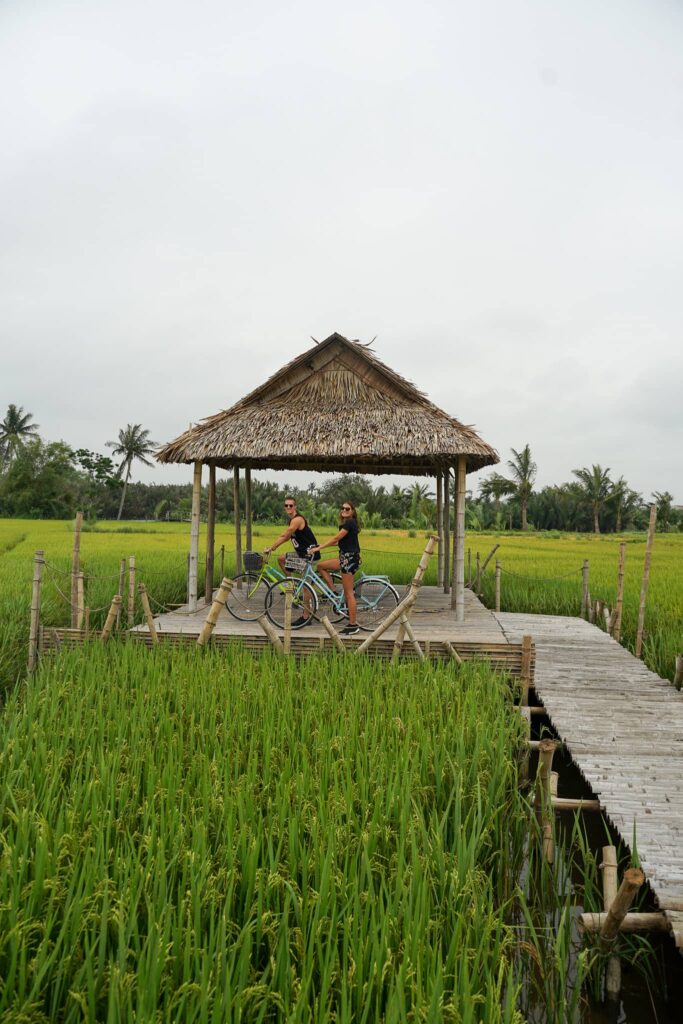

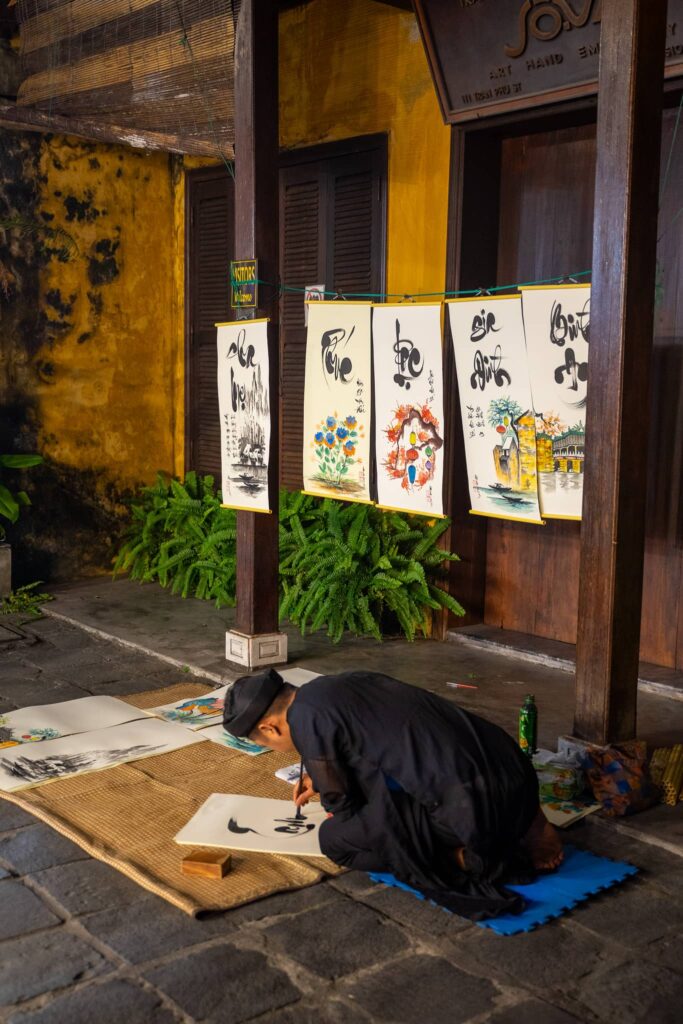
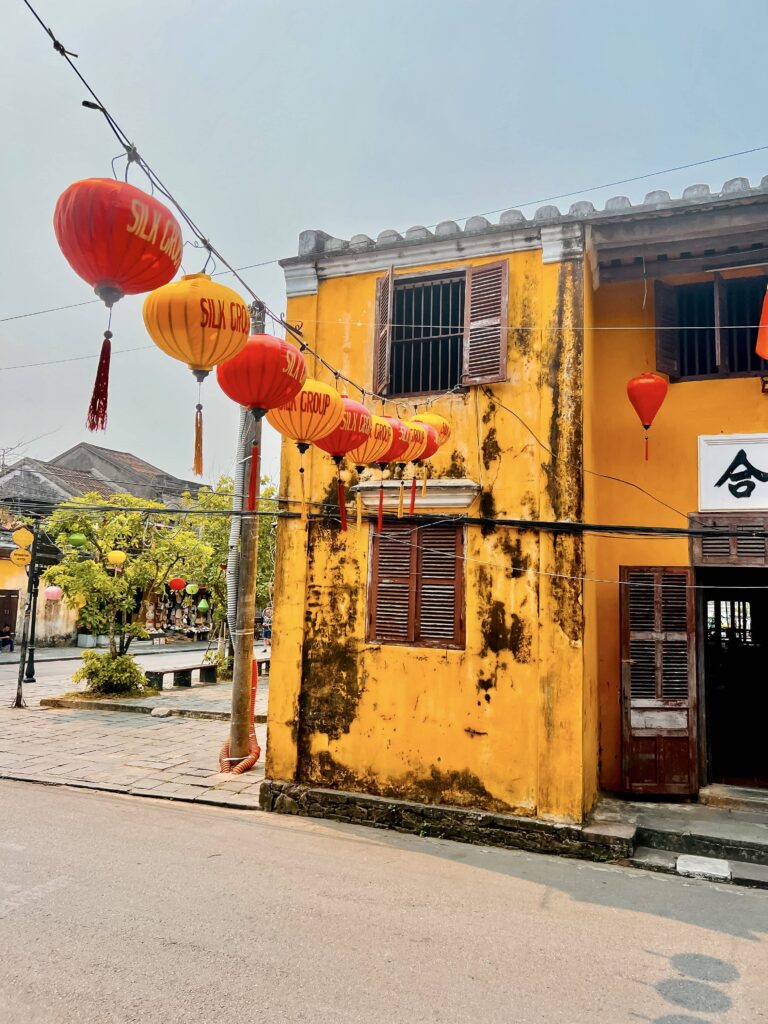
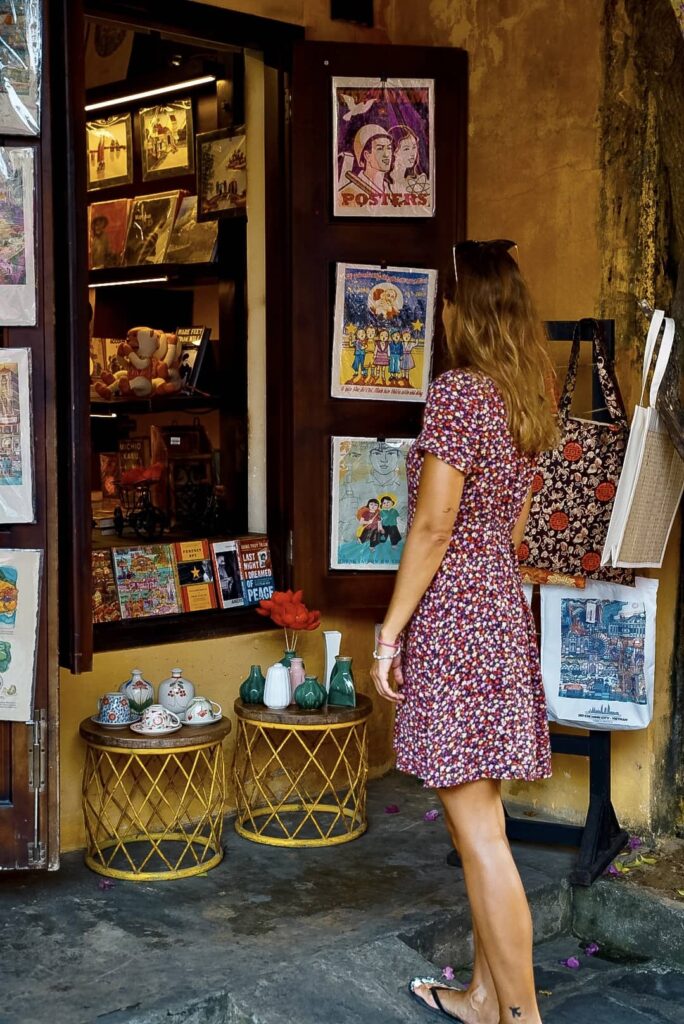
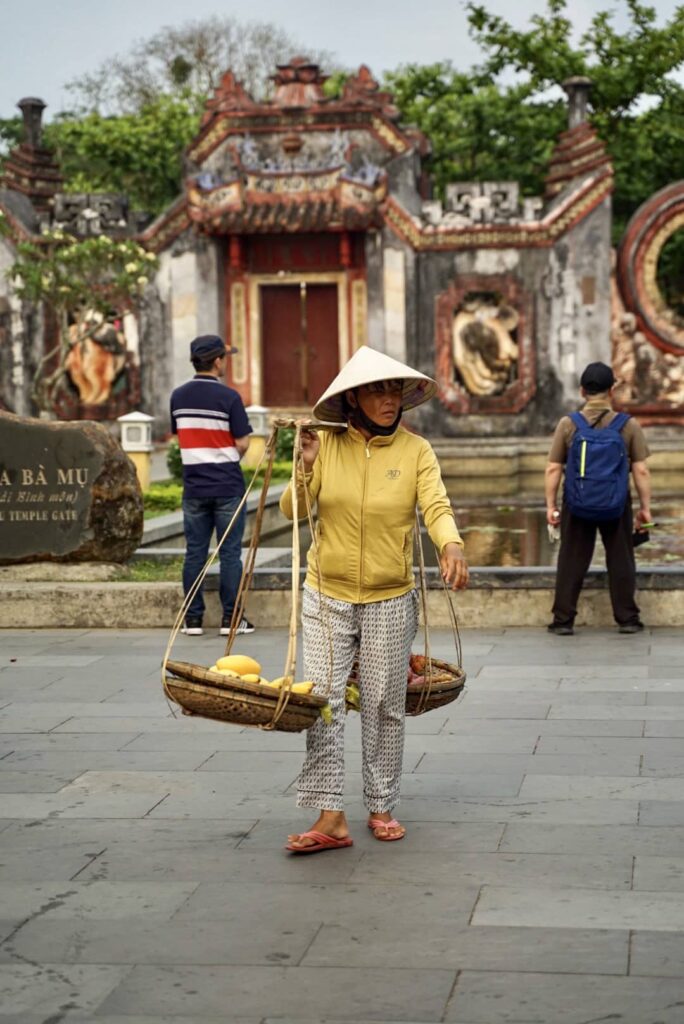
Tips & good addresses
Taste the Mot
One of the things that attracts foreign tourists to the ancient city of Hoi An is the legendary Mót drink at Mot Hoi An. When it comes to Hoi An, the Mót drink (location here) is almost synonymous with the traditional beverage that has captured the hearts of so many tourists. The main ingredients of Mot Hoi An are lime and lemongrass, along with famous herbs such as licorice, jasmine, chrysanthemum, lotus leaf, ginger, cinnamon, and others. All these ingredients are blended to create a smooth, sophisticated drink that everyone loves.
High-end restaurant
Co Mai – Co Mai was a real treat! You don’t pay the Vietnamese price for the meal, but it’s worth it. Located in a 200-year-old World Heritage building near the waterfront of old Hoi An. The french chef, Didier Corlou, is known the world over. We took the discovery menu, which was excellent from start to finish. We had a wonderful evening.
Hué, the Imperial City
Central Vietnam / Visiting time: 1 to 2 days.
Hué, Vietnam’s last royal capital under the Nguyen dynasty and a UNESCO World Heritage Site is a must-see for travellers to Vietnam. Not only for its formidable historical heritage but also for its divine gastronomy and all the tourist attractions that the graceful city of Hué has to offer. To make the most of your stay in Hué, here are 10 activities not to be missed.
Our accommodation: Happy home stay
What to do in Hué
To the question: What are the top things to do in Hué? The answer is :
- Discover its imperial city: The imperial city of Hué was one of the country’s most important political centers. You can easily wander around for 3 hours to visit everything. A guide is not necessary. Admission: 200,000 VDN.
- Visit one of the kings’ tombs: In addition to the imperial city, you’ll find many other tombs, temples, and pagodas in and around Hue. The tombs of the emperors of the Nguyen dynasty are scattered over hills to the south of the city and can be reached by boat or bicycle. There are seven tombs in all: the other emperors died in exile and have been buried. The best-known and most impressive are Minh Mang’s tomb, Tu Duc’s tomb, Hon Chen’s temple, and To Mieu’s temple. Entrance to each tomb costs VND100,000.
- Taste its excellent cuisine – and to do so, go to Madam Thu 1 or Madam Thu 2 and take the uncovered platter. A treat for the taste buds!
- Visit the Hue incense village (Village Thuy Xuan): Just 7 kilometers from the center of Hue is the Thuy Xuan incense village (click here for location). Here you can learn how to make incense, pose in traditional costume, and buy incense.
- Thuy Tien Lake abandoned water park: I think technically you’re not allowed in, but success varies from day to day. Photography enthusiasts and urban explorers won’t want to miss out. Ho Thuy Tien is a small, abandoned water park located on a lake not far from the city. The water park has been abandoned for over 10 years. Parts of it are in ruins, overgrown, and broken – it’s like stepping into a horror movie. In the middle of the lake stands a dragon’s head, the main attraction. This is not an official tourist attraction. We took a Grab cab to get there.
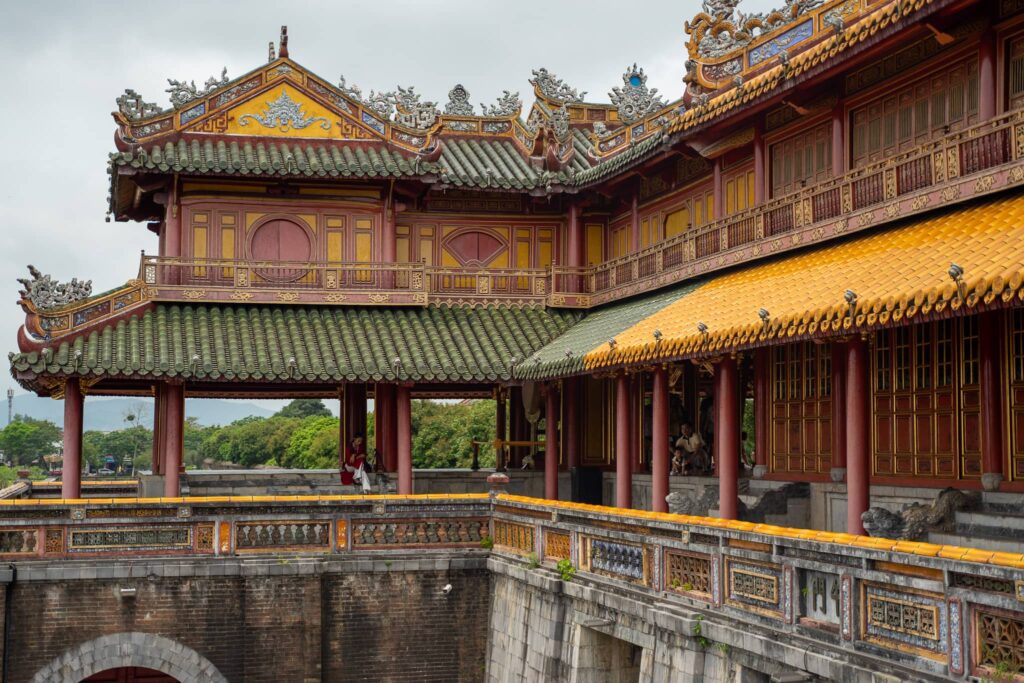
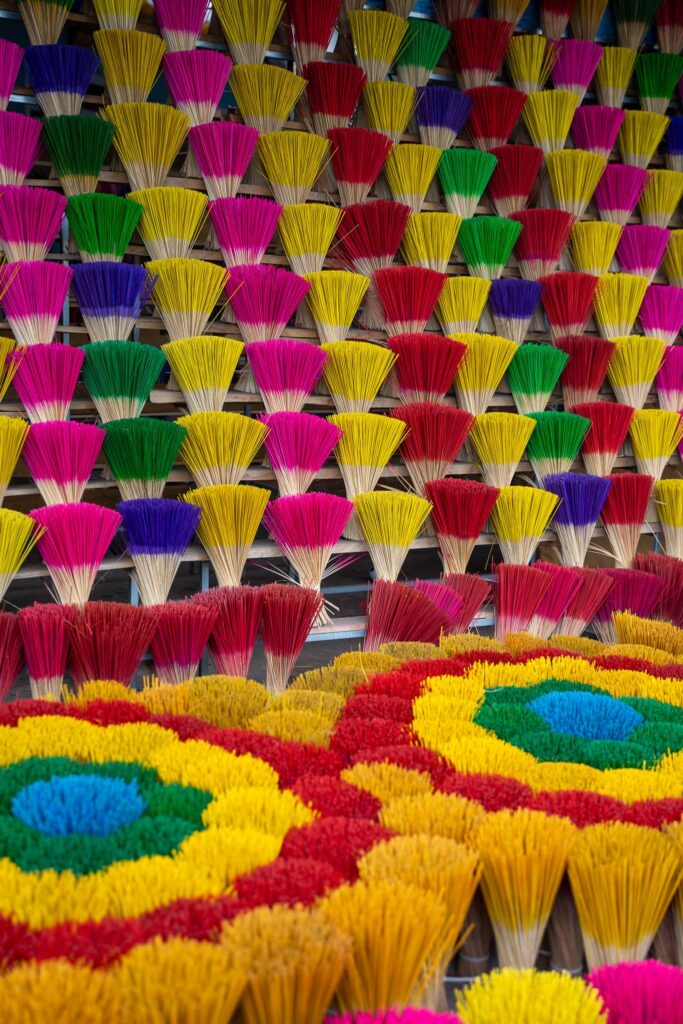
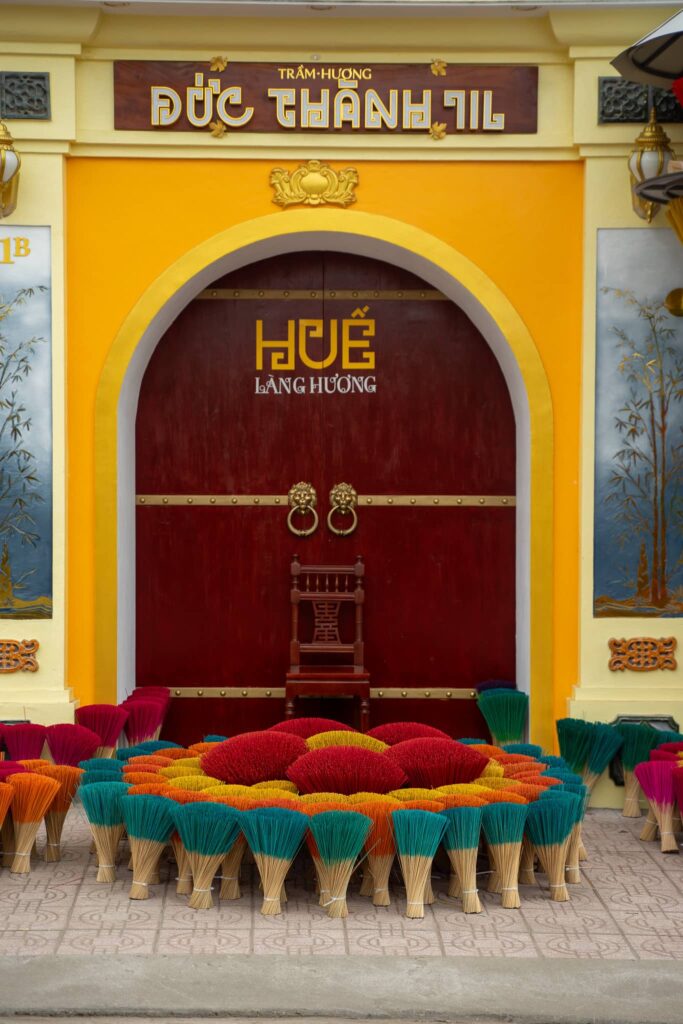
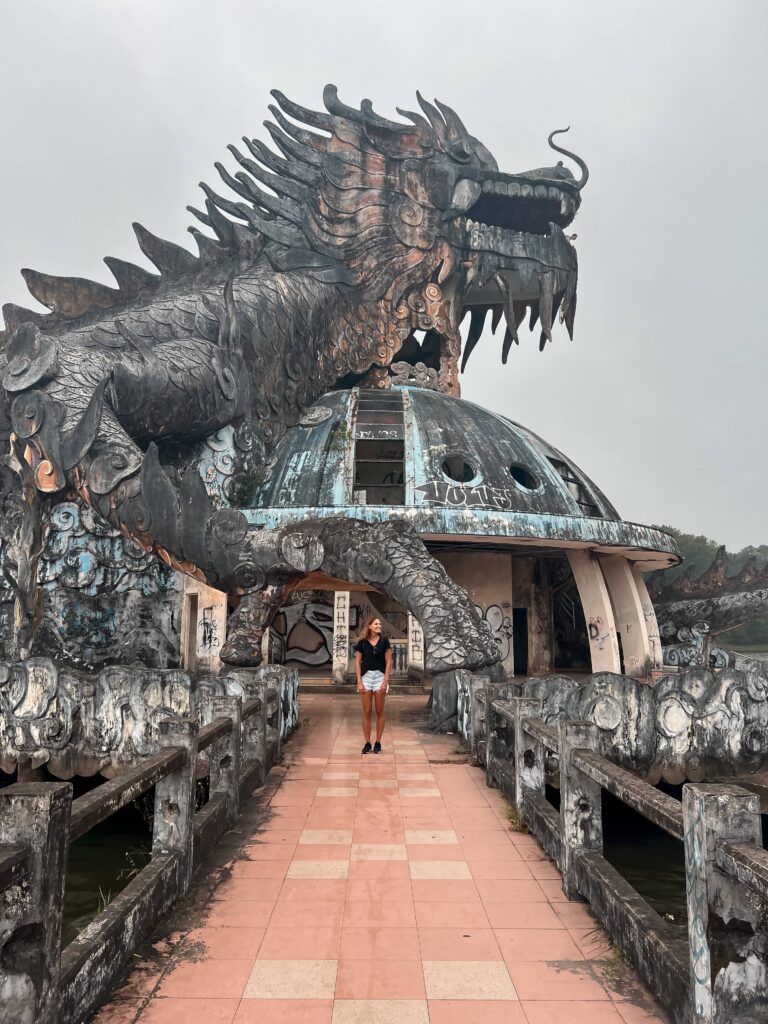
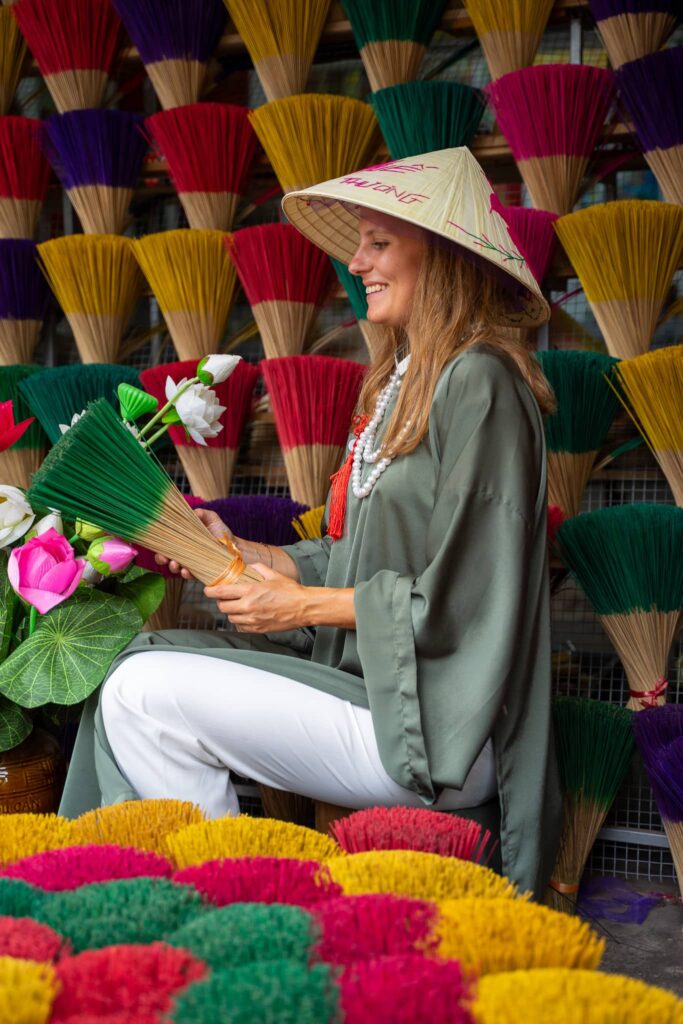
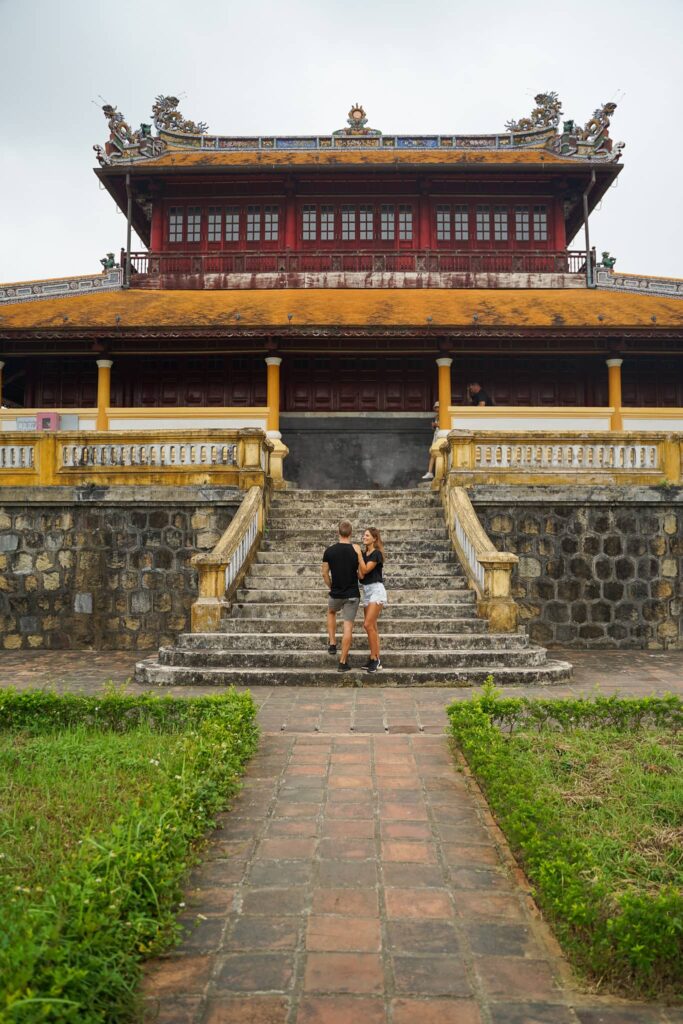

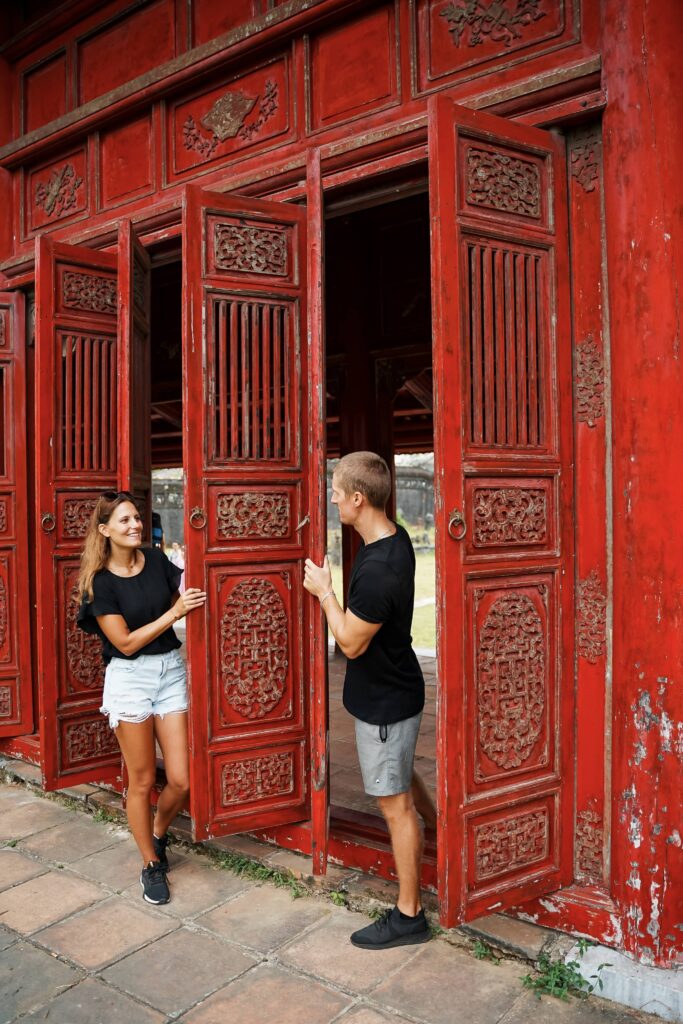
A stroll through Hanoi’s old quarter
Northern Vietnam / Recommended duration of visit: 3 days.
Located in the north of Vietnam, Hanoi is a great city to stroll around. For us, the Old Quarter is the highlight of Hanoi. It can be a bit chaotic, with crowded sidewalks and streets, exotic and colorful food for sale, and motorcycles whizzing around. But that’s all part of the experience.
Don’t hesitate to take a day trip from Hanoi to the famous Halong Bay.
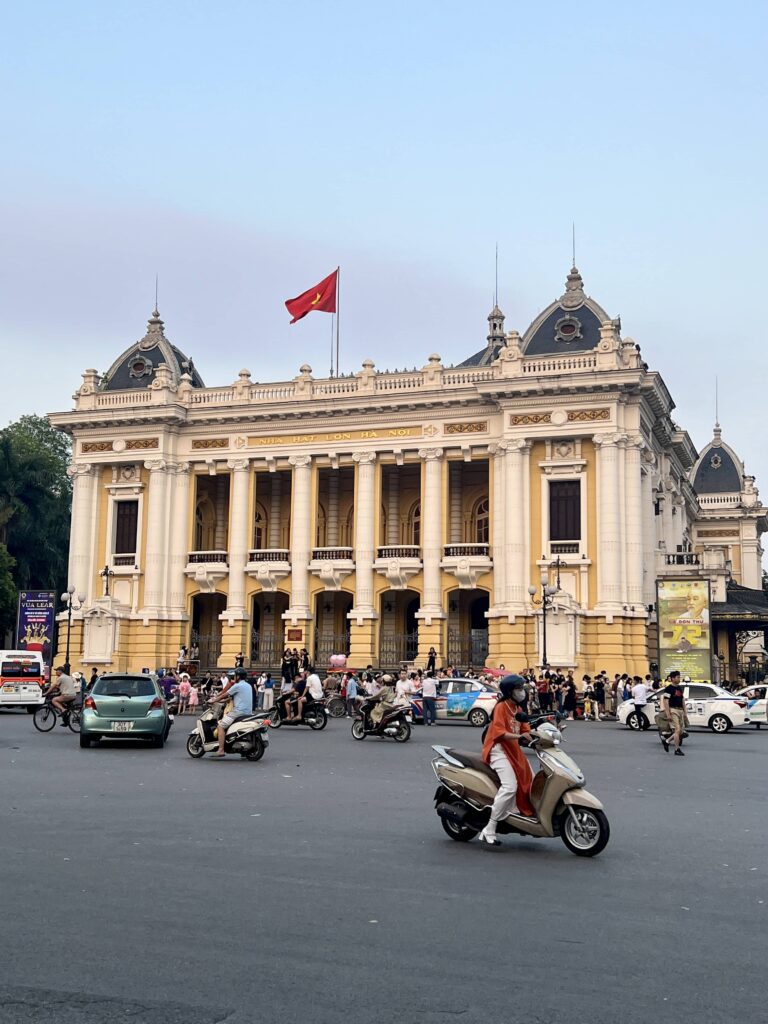
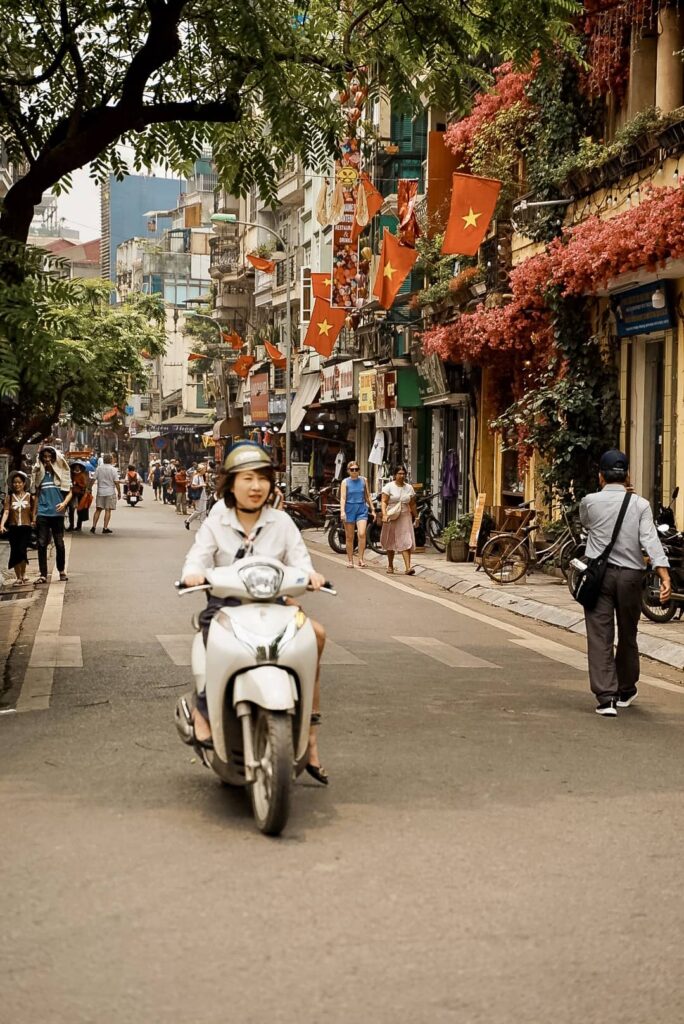
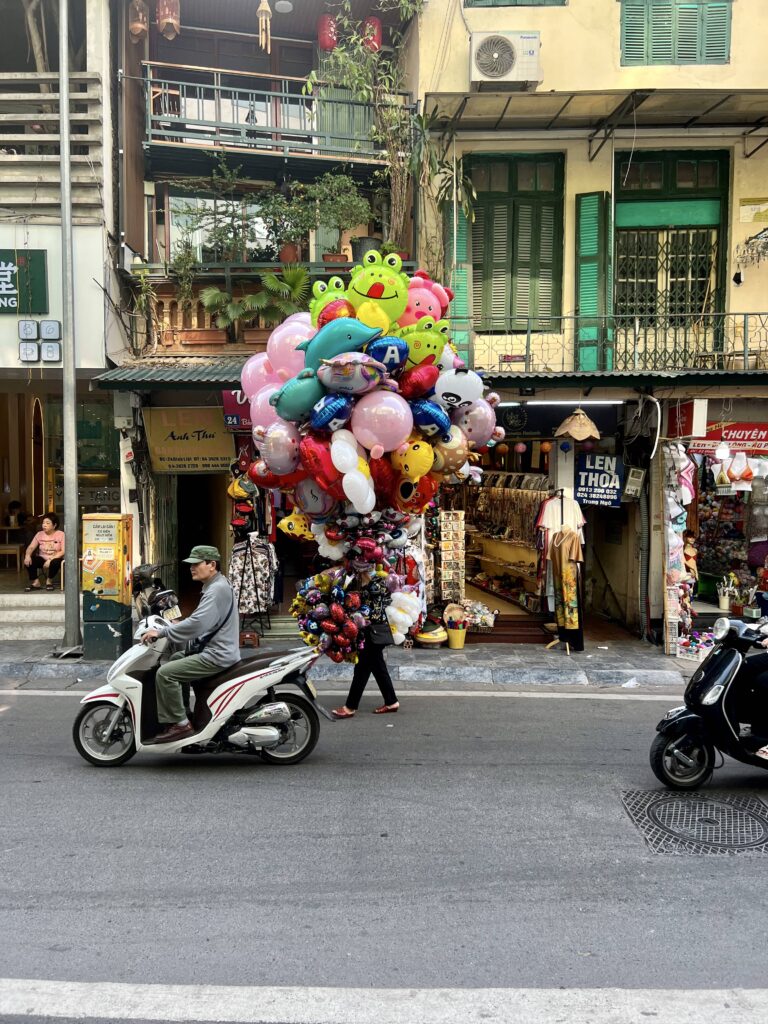
My good addresses in Hanoi
- Pizza 4P’s, are not local but the pizzas are excellent!
- Bun Cha Ta, Bun Cha Ta is a Vietnamese dish of grilled pork and noodles, said to have originated in Hanoi.
- Banh Mi 25, “Bánh Mì 25” is a typical Vietnamese sandwich restaurant, located in Hanoi’s Old Quarter.
- Loading T café, the Loading T Café, is an enchanting place in the heart of Hanoi’s lively Old Quarter. A real favorite. The egg coffee is incredible, as are their juices and coconut coffee.
Sapa and the mountains of North Vietnam
Northern Vietnam / Visiting time: 2 to 3 days.
Sapa is one of Vietnam’s most picturesque regions. It is world-famous for its ancient yellow and green rice terraces carved into the mountains by ethnic minorities.
Sapa is the perfect destination for hiking enthusiasts. It’s also an ideal stopover if you want to meet the ethnic minorities of North Vietnam.
Sapa in a nutshell:
- The town of Sapa.
- Trekking in the valley.
- Homestay in an ethnic minority village.
- Climb Mount Fansipan.
Discover the town of Sapa
For many, the town of Sapa has become the worst example of what mass tourism can bring. Admittedly, it’s no longer the authentic mountain village it once was (established, incidentally, by French colonists in 1922) before the region’s tourist success, but I still find a certain charm in this atypical town. It’s a big mix between an impressive number of hotels and guesthouses, restaurants, cafés, travel agencies, souvenir stores… It’s a bustling town with that mountain-town atmosphere I love. Sapa’s central square is particularly lively at the end of the day, as this is where the night market takes place every evening.
Trekking in the valley
We went on a trek and spent a day discovering impressive landscapes and immersing ourselves in Hmong culture. We walked and talked with our guide for 10 km through villages and rice fields.
Staying with local people
In addition to the majestic natural landscapes, traveling to Sapa is also an opportunity to discover the culture and traditions of northern Vietnam’s ethnic minorities, some of the best preserved in the country, despite the effect of mass tourism, which is growing every year. There are five ethnic minorities in Sapa: Hmong, Red Dao, Tay, Giay, and Xa Pho. Each ethnic group has its traditions, beliefs, dialect… The best known are the Hmong, but you’re sure to come across other groups during your stay in Sapa
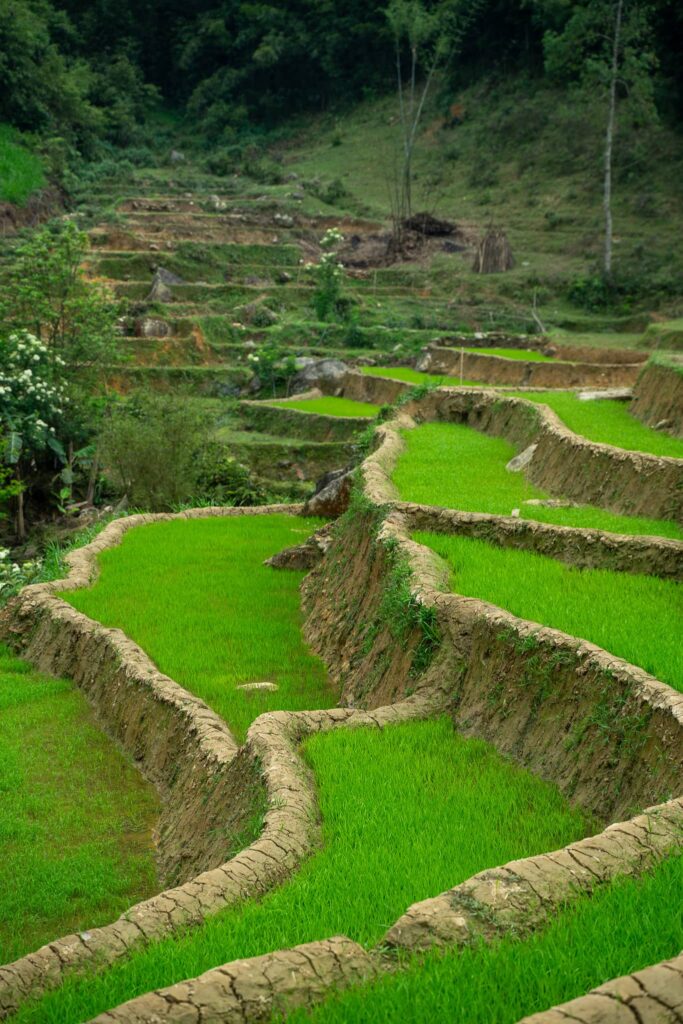

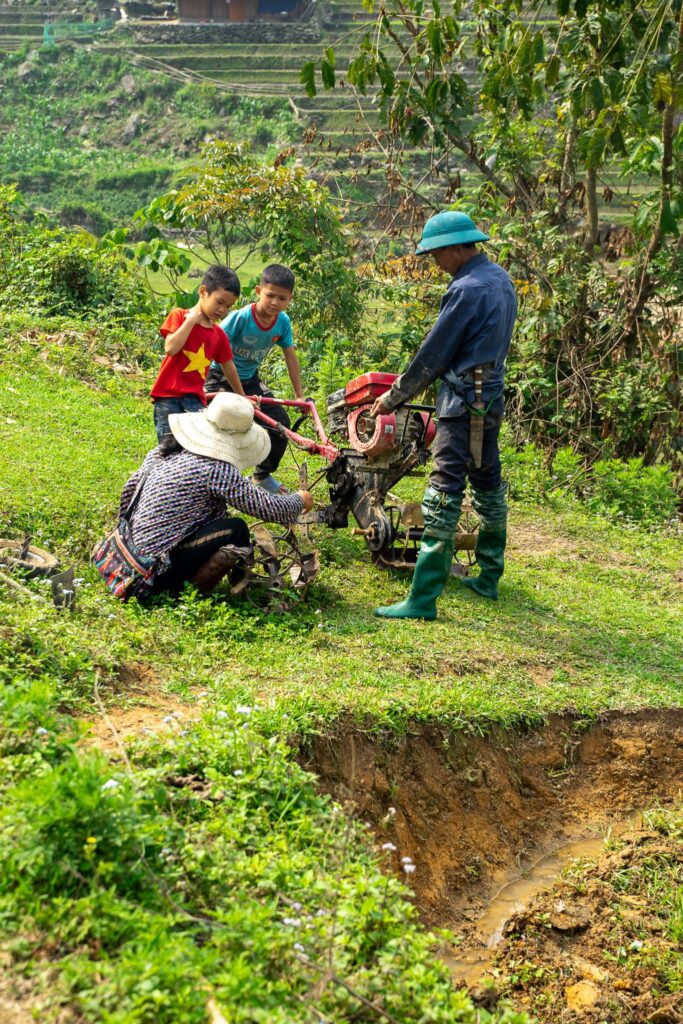

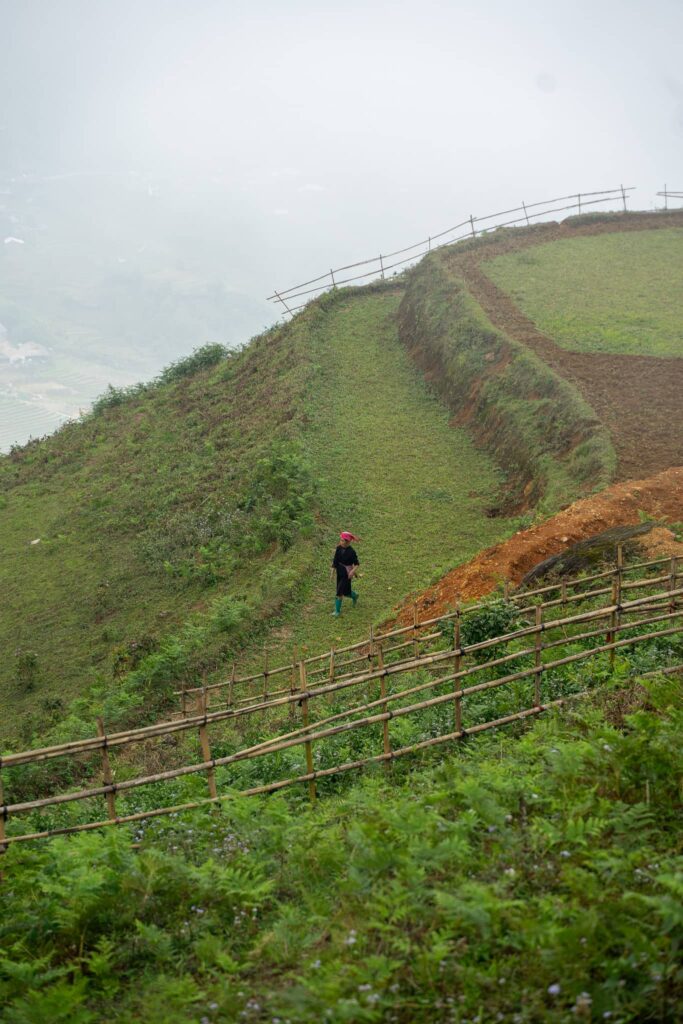
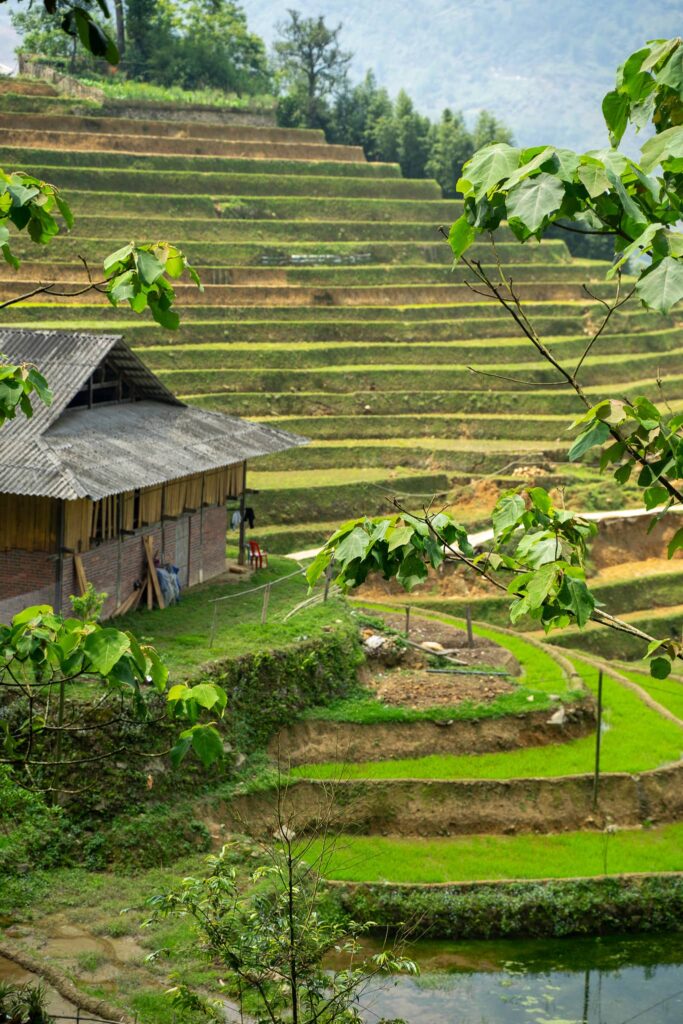
Climbing Mount Fansipan
If you wish, you can also climb Mount Fansipan in the region. Nicknamed the “roof of Indochina”, Mount Fansipan is the highest peak in the former Indochina (Vietnam, Cambodia, Laos), culminating at 3,143 meters above sea level. In the past, the summit could only be reached by climbing for 2 or 3 days. Although this is still possible, there is now a cable car that takes you from Sapa station to the top of Fansipan in 15 minutes. The ascent is now made accessible thanks to two cable cars that take you to the summit in 15 minutes for 800,000 VND (31€). I didn’t do it, but the view of the rice terraces lining the steep walls of the Sapa Valley looks impressive.
Some temples and pagodas that you can visit have also been built around the mountain top. On a clear day, the view of the surrounding mountains is superb
How do I get to Sapa?
Most visitors travel to Sapa from Hanoi, the capital. There are three options:
- Bus or minivan (day or night): this is the most popular option since the opening of the freeway in 2014. You can easily book your journey from your hotel or via the 12go website. Expect to pay between €18 and €25 per person and a journey time of around 5-6 hours.
- Night train: daily trains run from Hanoi to Lào Cai and back, 40 km from the border with China. The journey takes 8 hours (departure from Hanoi at 10 pm, arrival in Lào Cai at 6.10 am), and the ticket costs around $40 per person for a cabin with 4 berths, or $70-90 per person for a private cabin for two. On arrival at Lào Cai station, take a minivan (VND 30,000 – €1.20) to Sapa town in an hour. You can book an overnight train + shuttle to Sapa at a local travel agency or directly at the station. Click here for more info on timetables and fares.
The Ha Giang loop by motorcycle
Northern Vietnam / Visiting time: 3 to 5 days.
Ha Giang province is a place where roads wind through breathtaking mountains, rice terraces, and majestic wildflower valleys. Home to some of Vietnam’s most beautiful ethnic minority tribes, unforgettable turquoise canyons, and narrow, winding passes, the Ha Giang loop is an adventurer’s dream.
Read on to find out exactly who, what, where, when, and why you should strap on your helmet and get ready to ride the back roads of Ha Giang!
Pack your bags and get ready for the trip of a lifetime through the most beautiful part of the Vietnamese landscape
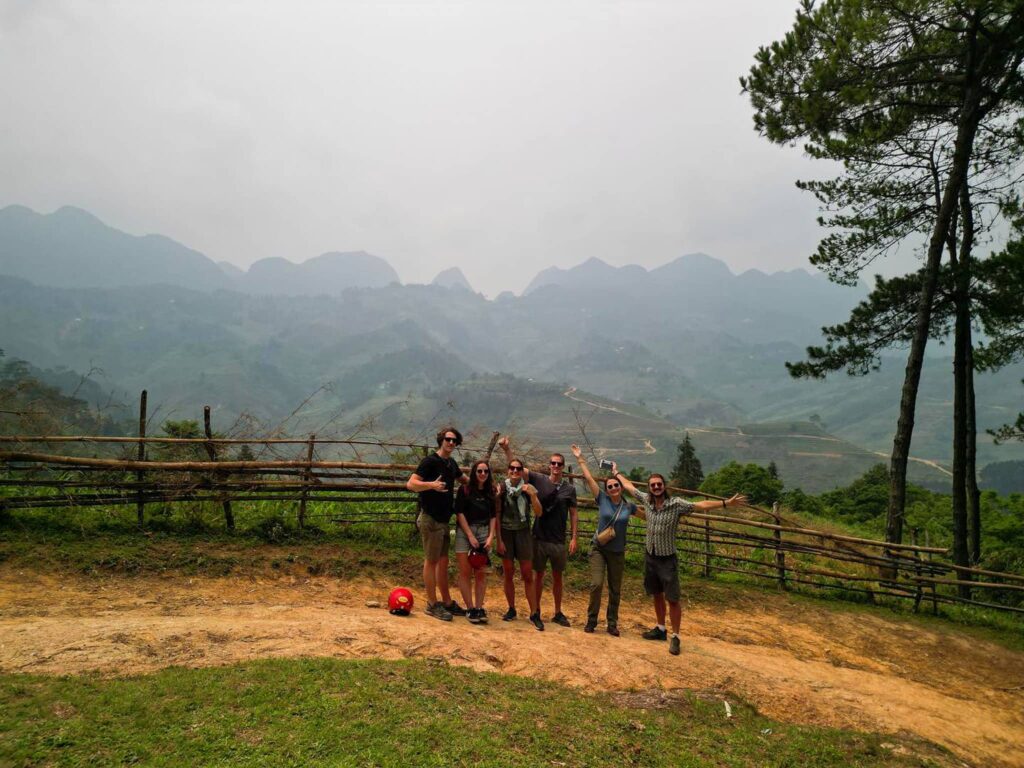
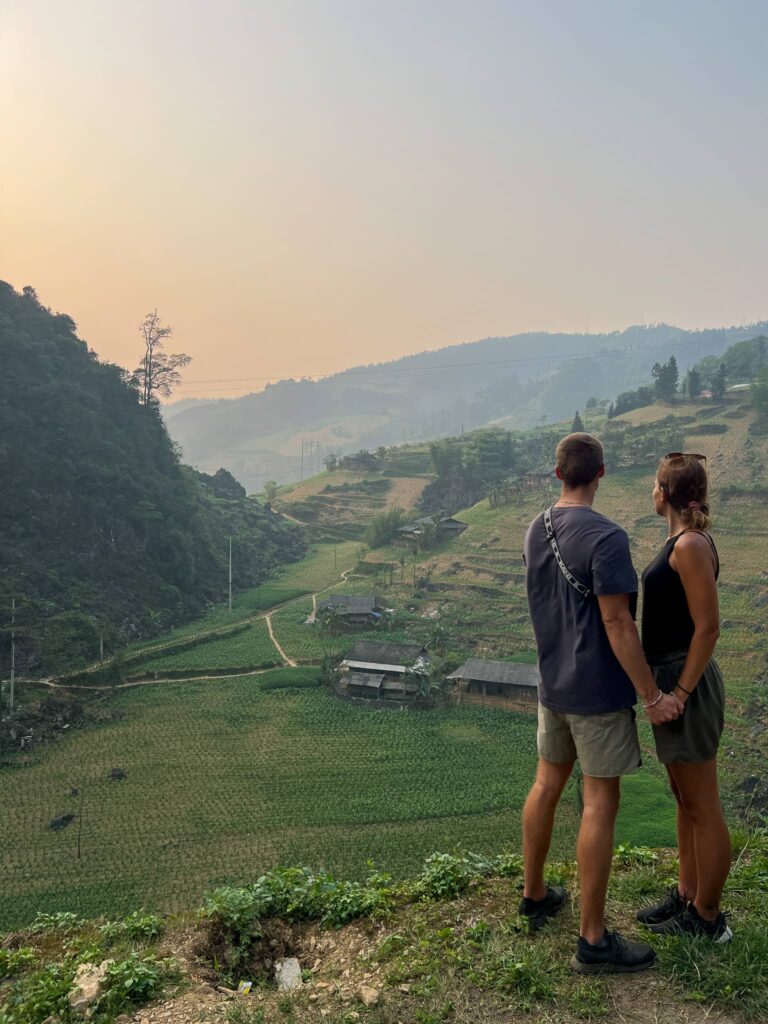
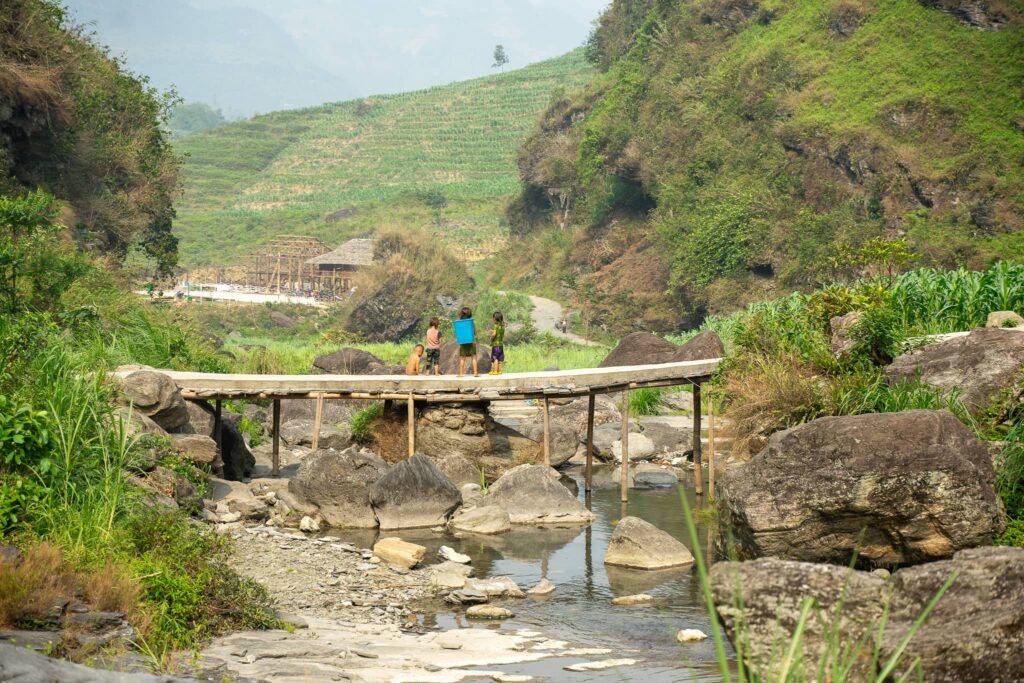
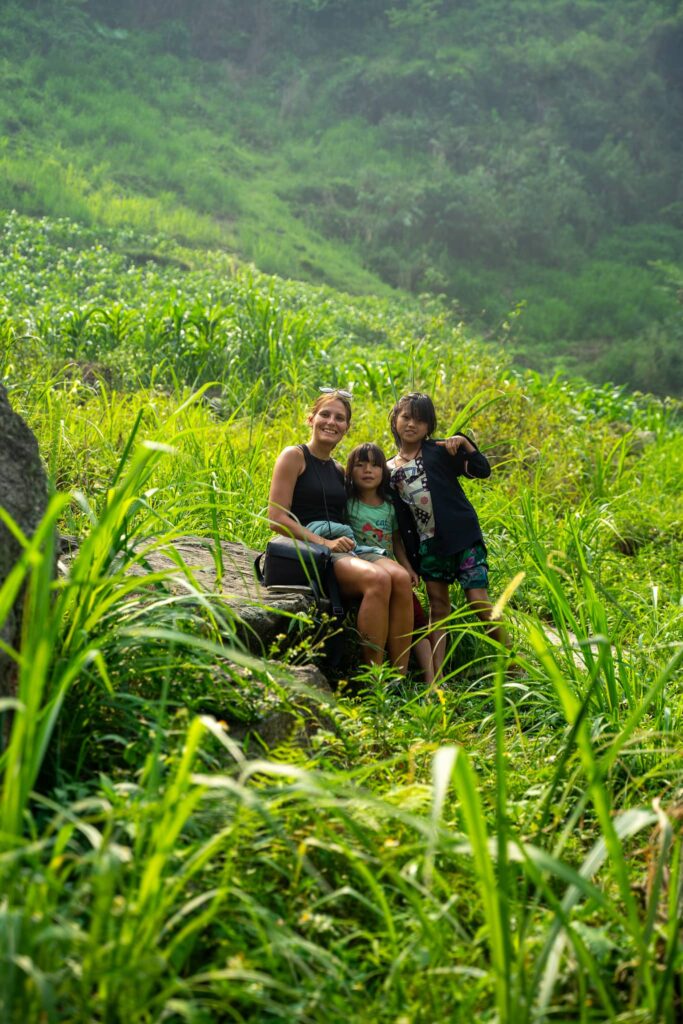
Discover Vietnamese cuisine
Vietnamese cuisine is delicious. The cuisine varies from north to south, with each city specializing in different dishes.
In northern Hanoi, you can enjoy sweet and sticky rice, fish with turmeric and dill, bún cha (grilled pork and noodles), and fried dumplings. In Saigon, try bánh mì (Vietnamese baguette sandwich) or bánh tam bì (thick noodles with pork and coconut cream sauce). In Hoi An, try Cao Lau and in Hue, Bún bò Hue. And wherever you go, Pho is delicious!
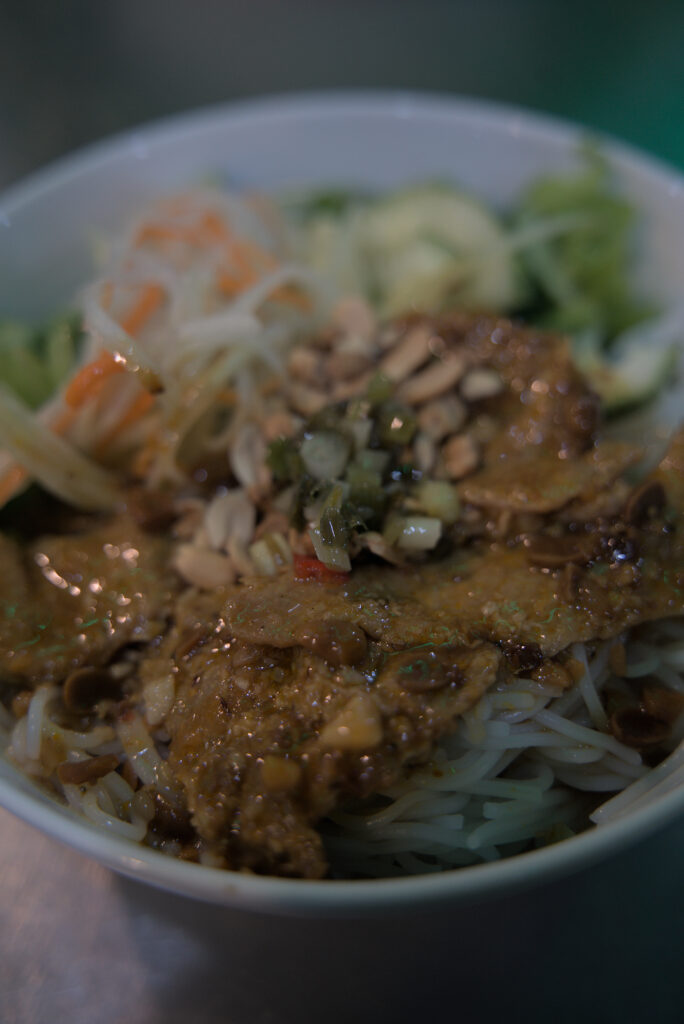

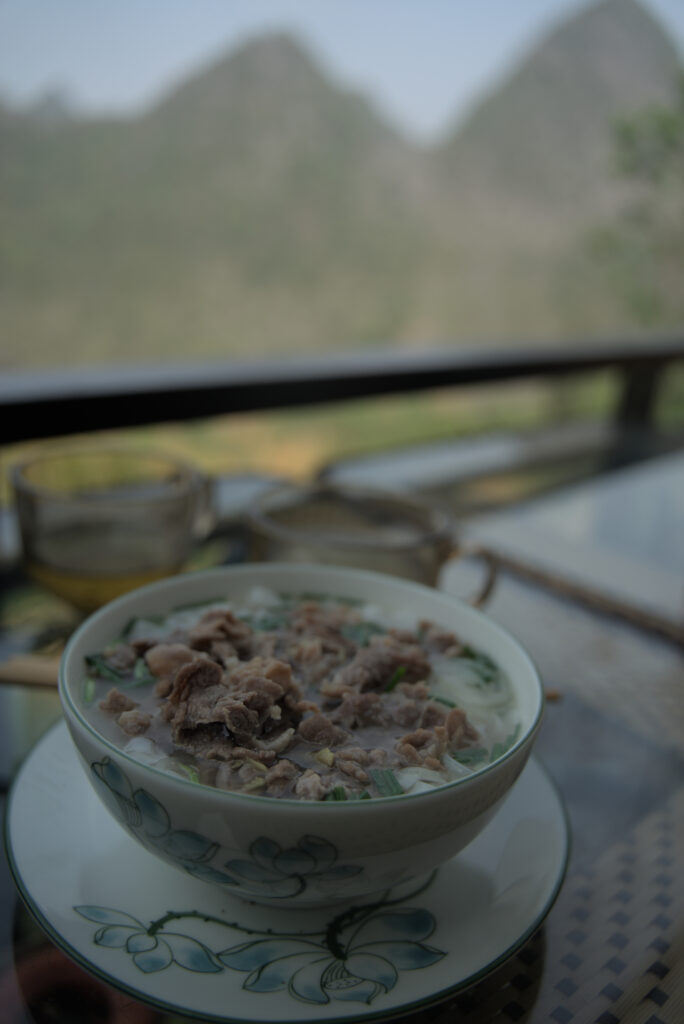
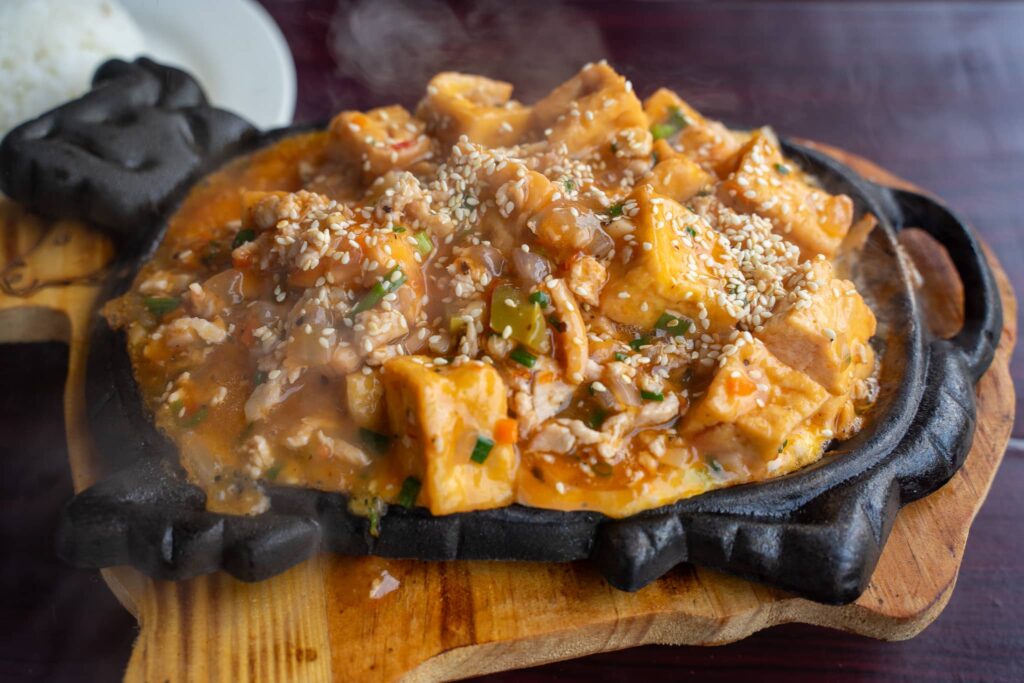
I hope this article with the best places in Vietnam to visit has inspired you for your stay in Vietnam, and that you have plenty of ideas! I personally really enjoyed this hyper-diverse trip. Enjoy your trip ❤️.
If you like Asia, take a look at our other articles too.
This article contains affiliate links. If we’ve helped you organize your trip or you’d just like to support us, please consider booking your activities in Phnom Penh by clicking on our links. We’ll earn a small commission and the price stays the same for you of course. 🤍
Other related articles
- VIETNAM TRAVEL ITINERARY: 1-MONTH ITINERARY FOR A GUARANTEED CHANGE OF SCENERY
- WHAT TO KNOW ABOUT TRAVELING TO VIETNAM?


